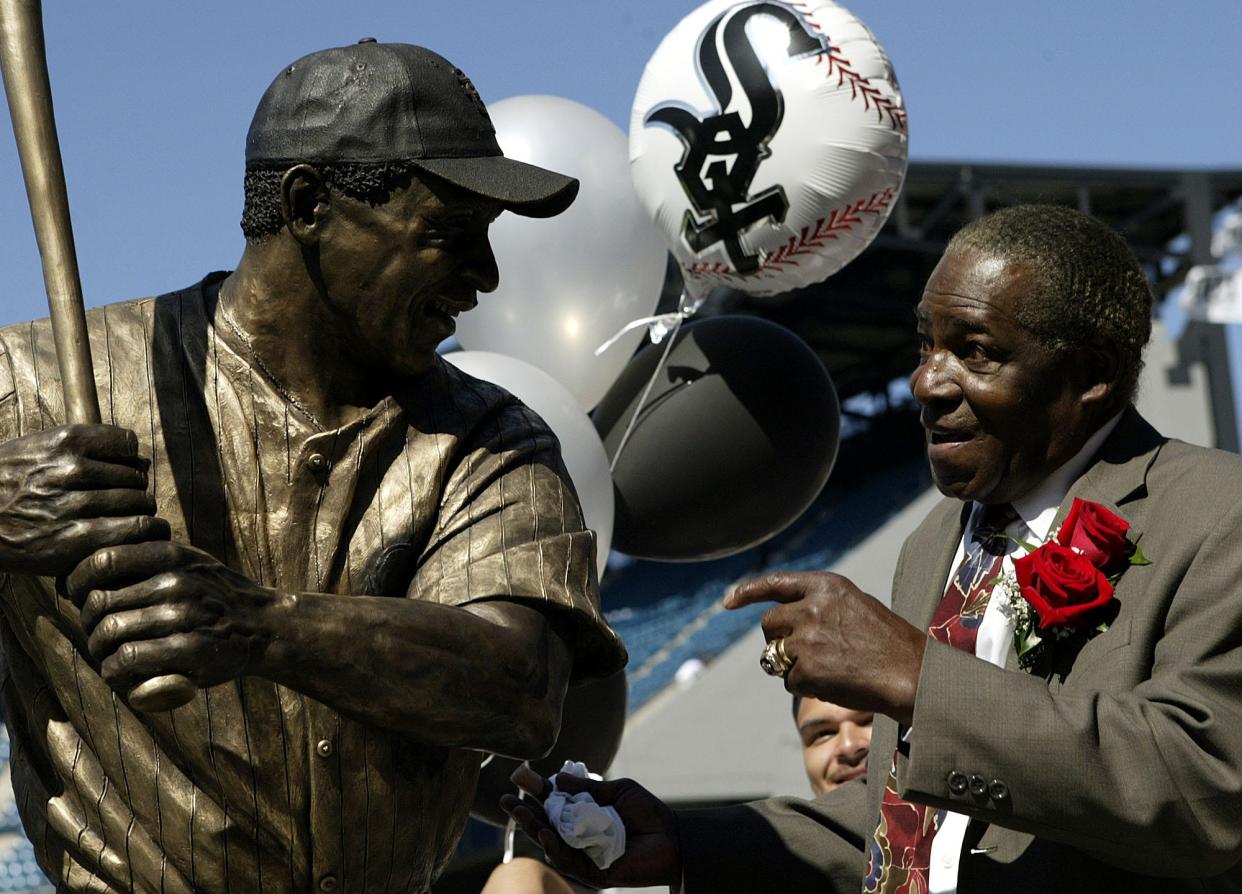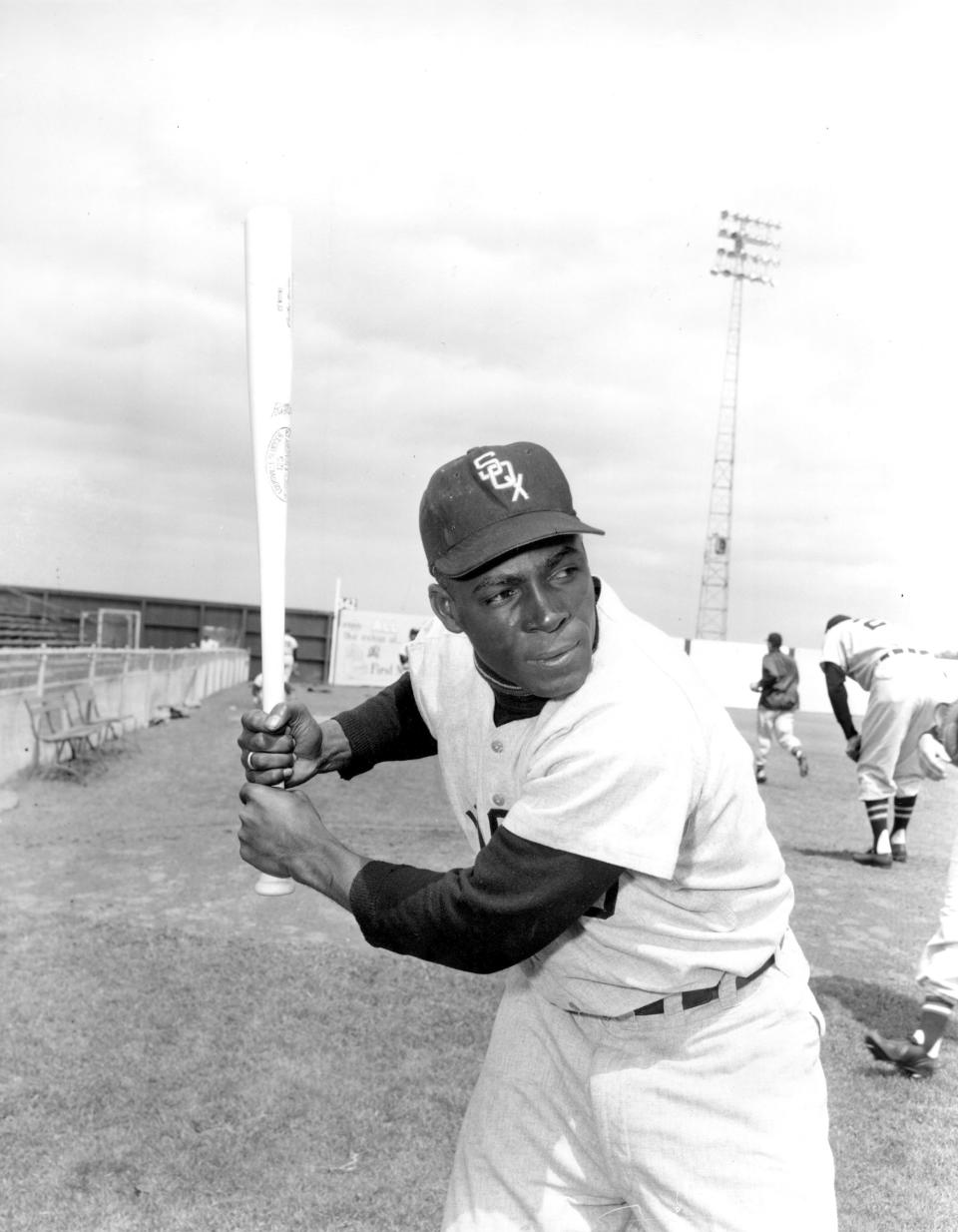Minnie Minoso was more than Mr. White Sox, he was pivotal pioneer

- Oops!Something went wrong.Please try again later.
- Oops!Something went wrong.Please try again later.
- Oops!Something went wrong.Please try again later.
- Oops!Something went wrong.Please try again later.
Editor's Note: With the election of Zeeland native Jim Kaat to the National Baseball Hall of Fame, The Sentinel will look at the careers of his fellow electees. Today: Minnie Minoso.
The Hall of Fame is all about showcasing the greatest players in baseball history, but it also tells the history of the game with the most important pioneers, trailblazers and influencers earning the highest honor for their roles in the game's history.
Minnie Minoso was one of those influential trailblazers and after more than 30 years of being considered for the Baseball Hall of Fame, was finally elected.
Minoso was a fantastic player. He started his career for the New York Cubans in the Negro Leagues before joining the Cleveland Indians, then the Chicago White Sox.
He was so popular he became known as Mr. White Sox.
Minoso was an 11-time All-Star outfielder who batted .299 for his career.
That is enough to be a strong Hall of Fame candidate, but Minoso's role in the game's history is so much bigger than what he did on the field.
Minoso was the game's first Black Latino star, on the field more than seven years before Roberto Clemente, who many have attributed this pioneering role to.
Now don't get me wrong, Clemente is still the most important Latino player in history and the greatest. But there was a trailblazer in the majors nearly a decade before Clemente joined the Pittsburgh Pirates, and that was Minoso.
Fellow Hall of Fame electee Tony Oliva, from Cuba, called Minoso "Our Jackie Robinson."

Minoso was in the majors less than two years after Robinson and started to pave the way for Black Latinos who would transform the game like Clemente, Oliva, Rod Carew, Juan Marical, Orlando Cepeda, Tony Perez and Luis Tiant (all Hall of Famers except Tiant, which is a column for another day).
As someone in the game with dark skin during the integration era, Minoso, like most Black players of his time, dealt with racism in the game and in life, not able to eat at the same restaurants or even sleep in the same hotels as his other teammates.
But unlike a lot of the Black players who were integrating the game at the time, he could speak very little English, so he didn't have the same camaraderie with his fellow Black teammates.
It made the clubhouse and life outside the ballpark a very lonely place.
Minoso's passion and exuberance for the game was what got him through.
After helping the New York Cubans to the Negro Leagues World Series in 1948, he joined Cleveland in 1949. Two years later, he was traded to the White Sox and led the American League in stolen bases, hit by pitches and triples, while batting .326. He finished second in the Rookie of the Year voting and fourth in MVP voting.
Minoso went on to lead the AL in hits once, triples three times, stolen bases three times, total bases once and hit by pitches 10 times. He made an All-Star team in 11 different seasons and won three Gold Glove awards as the top fielder at his position.
For the analytics enthusiasts, he had a 53.8 wins above replacement and an OPS+ (on base % plus slugging % with era and ballpark factors weighed) of 130 which is Hall of Fame-caliber.
So he was clearly a Hall of Fame player, but given his role as a pioneer and trailblazer for Black Latinos, it is stunning that he wasn't elected to the Hall of Fame decades ago, especially devastating since he died in 2015.
"It was good to see him finally get the support (he deserves)," Jim Kaat said.
He was the Hall of Fame's greatest omission, until he was voted in with Oliva, Jim Kaat and Gil Hodges on the Golden Era Committee ballot.
The greatest omission is now one will receive the greatest honor.
— Contact Sports Editor Dan D'Addona at Dan.D'Addona@hollandsentinel.com. Follow him on Twitter @DanDAddona and Facebook @Holland Sentinel Sports.
This article originally appeared on The Holland Sentinel: Minnie Minoso was more than Mr. White Sox, he was pivotal pioneer

